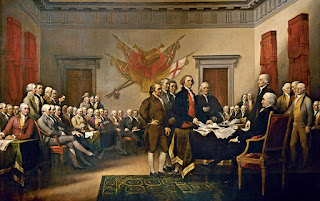The Yom Kippur War
The Yom Kippur War, also known as the October War or the Ramadan War, was a conflict fought from October 6 to October 25, 1973, between a coalition of Arab states led by Egypt and Syria against Israel. The war began on Yom Kippur, the holiest day in Judaism, and during Ramadan, the sacred month of fasting in Islam. It marked a significant chapter in the Arab-Israeli conflict, reshaping Middle Eastern geopolitics and having far-reaching impacts on international relations and military strategies.
Prelude to War
The roots of the Yom Kippur War can be traced back to the Six-Day War of 1967, when Israel captured the Sinai Peninsula from Egypt, the Golan Heights from Syria, the West Bank from Jordan, and East Jerusalem. The Arab states, humiliated and eager to reclaim lost territories, refused to recognize Israel and sought ways to reverse their losses.
Egyptian President Anwar Sadat and Syrian President Hafez al-Assad planned a coordinated attack to regain Sinai and the Golan Heights, believing that a military victory or even a substantial gain would force Israel to negotiate on more favorable terms. Both leaders also aimed to restore national pride and reinforce their political positions.
The Surprise Attack
On October 6, 1973, Egypt and Syria launched a surprise attack on Israeli positions in the Sinai Peninsula and the Golan Heights. The choice of Yom Kippur for the attack capitalized on the fact that Israel would be least prepared, with many soldiers on leave and the country in a state of solemn religious observance.
In the Sinai, over 100,000 Egyptian troops crossed the Suez Canal, overwhelming the thin Israeli defensive line, known as the Bar Lev Line. The Egyptian forces were well-prepared, using portable bridges and water cannons to breach Israeli defenses. In the Golan Heights, Syrian forces attacked with about 1,400 tanks, pushing the smaller Israeli forces to the brink of defeat.
Initial Arab Successes
The initial days of the war saw significant Arab successes. Egyptian forces advanced approximately 15 kilometers into the Sinai, establishing a strong defensive position. Similarly, Syrian forces made deep incursions into the Golan Heights, threatening Israeli control over the region. The element of surprise, coupled with careful planning and coordination, allowed the Arab forces to achieve their initial objectives.
Israeli Mobilization and Counterattack
Israel quickly mobilized its reserves, which formed the backbone of its military strength. Within days, the Israeli Defense Forces (IDF) mounted a counterattack. On the Golan Heights, Israeli forces halted the Syrian advance and began pushing them back. The high ground advantage and superior air power played crucial roles in turning the tide.
In the Sinai, after initial setbacks, the IDF launched a counteroffensive led by General Ariel Sharon. By October 15, Israeli forces had crossed the Suez Canal at the Chinese Farm area and encircled the Egyptian Third Army. This maneuver, known as Operation Stouthearted Men, significantly shifted the balance of power in the Sinai.
International Involvement and Diplomacy
The superpowers were drawn into the conflict, with the United States and the Soviet Union providing substantial support to their respective allies. The U.S. initiated an airlift to supply Israel with critical military hardware, including tanks and aircraft, while the Soviet Union replenished Arab losses.
The risk of a direct superpower confrontation grew as the war progressed, leading to urgent diplomatic efforts to de-escalate the situation. The United Nations Security Council passed Resolution 338 on October 22, calling for an immediate ceasefire and negotiations for a durable peace. Despite this, fighting continued until October 25, when a second ceasefire was enforced.
The War’s Aftermath
The Yom Kippur War resulted in significant casualties and material losses on both sides. Israel suffered approximately 2,800 dead and 8,000 wounded, while Arab casualties were estimated at around 18,500 dead and 35,000 wounded. The war also saw the largest tank battles since World War II, with significant armor losses.
Politically, the war had profound impacts. In Israel, the initial failures led to widespread criticism of the government and military leadership, culminating in the resignation of Prime Minister Golda Meir and Defense Minister Moshe Dayan. The war also shattered the myth of Israeli invincibility, leading to a reevaluation of military strategies and defense policies.
For Egypt and Syria, despite not achieving a decisive victory, the war restored a sense of pride and demonstrated their military capability. Sadat's strategic gamble eventually paid off diplomatically, as the war paved the way for the Camp David Accords in 1978, where Egypt and Israel signed a peace treaty, leading to the return of the Sinai Peninsula to Egypt.
Strategic and Tactical Lessons
The Yom Kippur War highlighted several strategic and tactical lessons. It underscored the importance of intelligence and the dangers of complacency, as Israel's failure to anticipate the attack nearly led to disaster. The war also demonstrated the effectiveness of anti-tank and anti-aircraft missiles, which inflicted heavy losses on Israeli armor and aircraft, altering future military doctrines worldwide.
Energy Crisis and Global Impact
The war had a significant global impact beyond the battlefield. The Arab oil-producing countries imposed an oil embargo against nations perceived as supporting Israel, leading to the 1973 oil crisis. This embargo caused a dramatic increase in oil prices, triggering economic turmoil and highlighting the geopolitical power of oil.
Conclusion
The Yom Kippur War was a pivotal event in the Arab-Israeli conflict, marked by intense combat and high stakes. It reshaped Middle Eastern geopolitics, leading to a reassessment of military strategies and laying the groundwork for future peace negotiations. The war also underscored the interconnectedness of regional conflicts and global politics, with repercussions felt far beyond the immediate theaters of combat.
.jpg)
.jpg)


Comments
Post a Comment